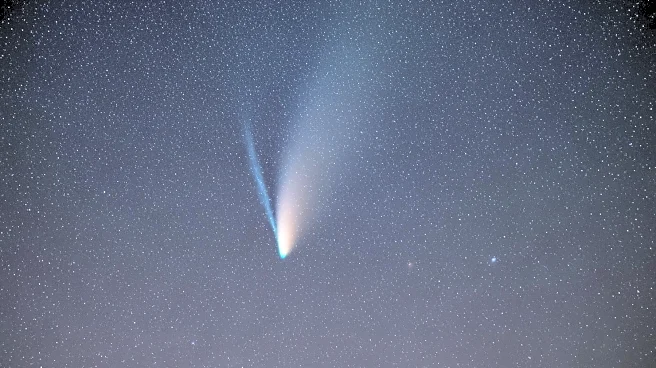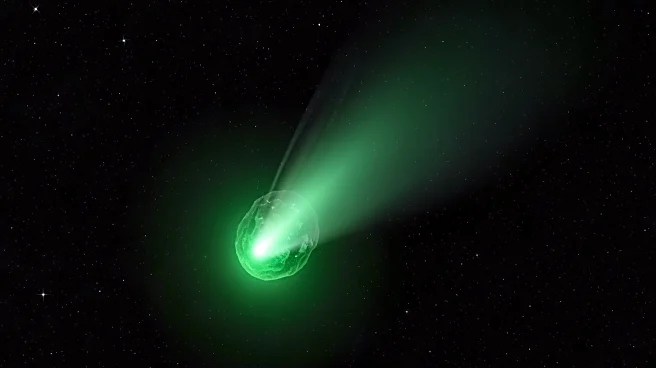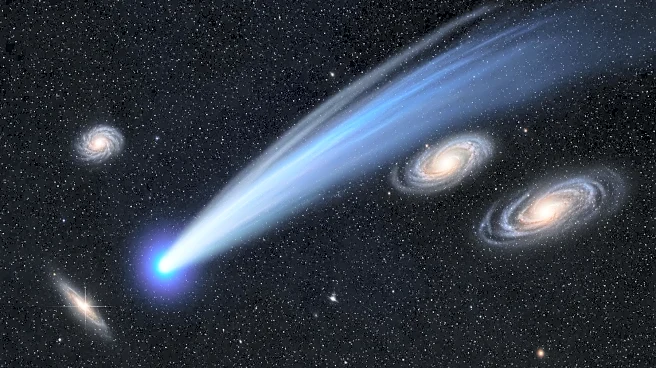What's Happening?
Comet Lemmon, officially known as C/2025 A6, has been observed lighting up the night sky over Spain. Discovered by the Mount Lemmon Survey in Arizona, the comet was initially thought to be asteroid-like but was reclassified upon revealing its coma and
tail. Comets, often described as 'dirty snowballs,' release gas and dust when approaching the sun, forming a glowing coma and tail. The recent sighting near Pedraforca mountain in Spain provided a spectacular view, capturing the comet's active sublimation and offering insights into its composition.
Why It's Important?
Comet Lemmon's appearance offers astronomers a chance to study primordial solar system material, enhancing understanding of cometary behavior and composition. Such observations contribute to the broader knowledge of solar system formation and evolution. The event also highlights advancements in astrophotography and survey telescopes, which have increased the discovery and documentation of celestial objects, enriching scientific research and public interest in astronomy.
What's Next?
Astronomers will continue to monitor Comet Lemmon and similar celestial events, using data to refine models of cometary activity and solar system dynamics. The public's interest in such phenomena may drive further investment in astronomical research and technology, supporting future discoveries and educational outreach.
Beyond the Headlines
The comet's visibility to the unaided eye underscores the rarity and significance of such events, fostering public engagement with astronomy. This engagement can inspire educational initiatives and promote scientific literacy, encouraging future generations to explore the cosmos.















